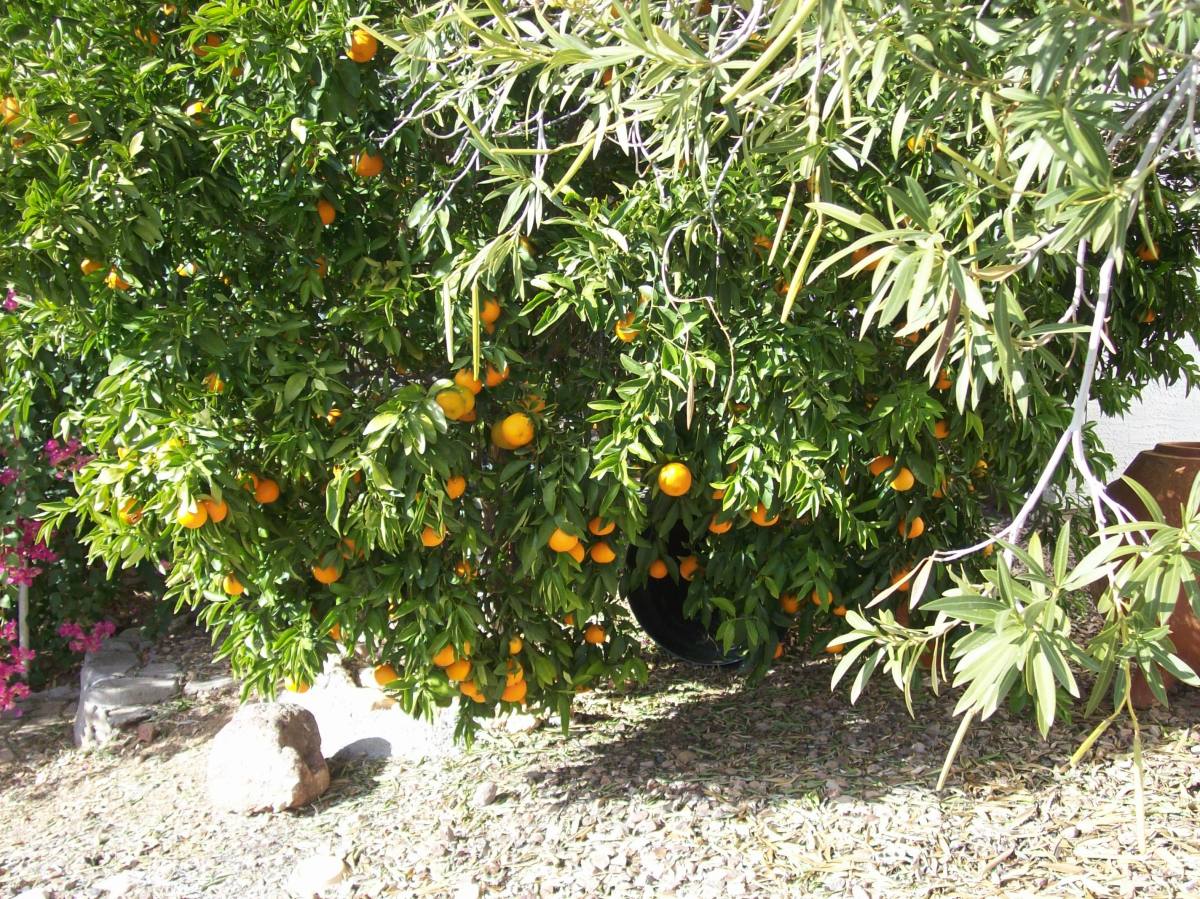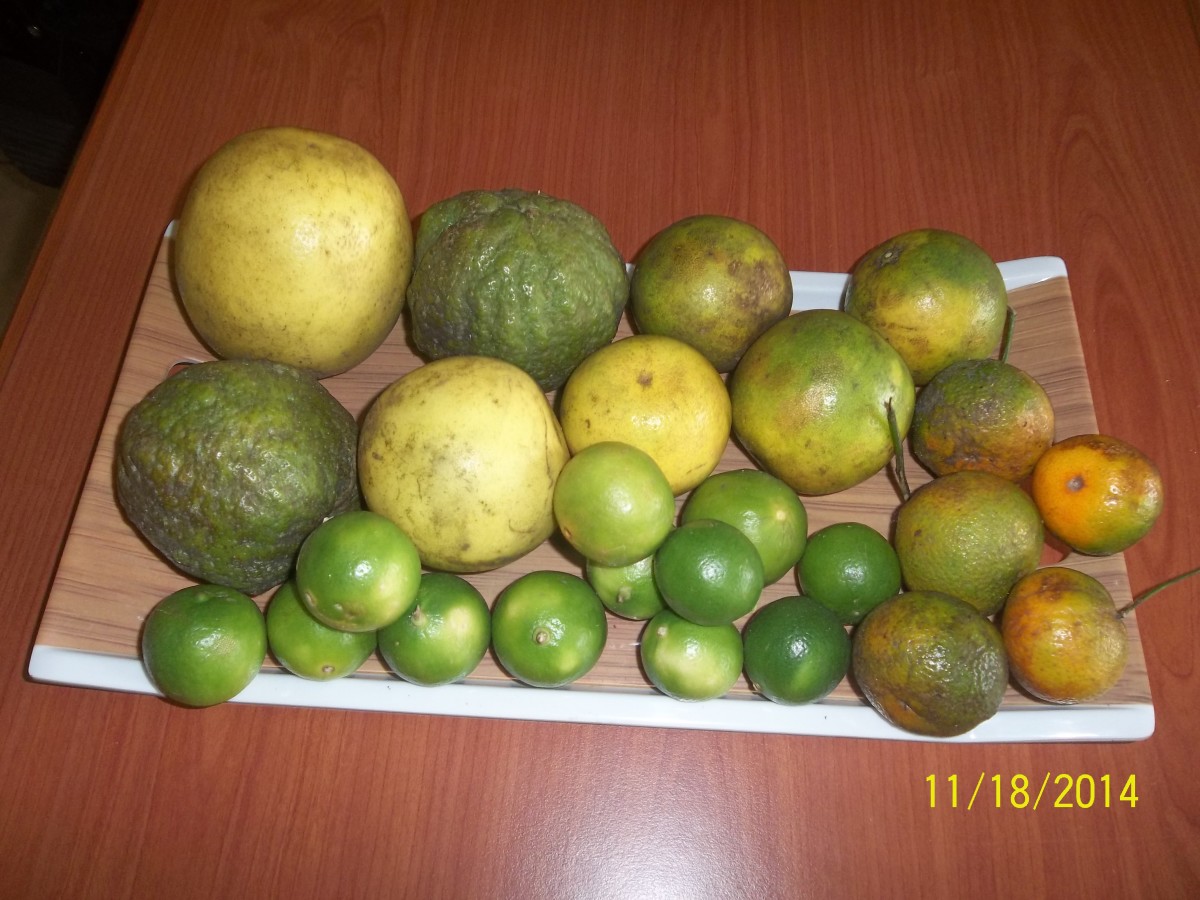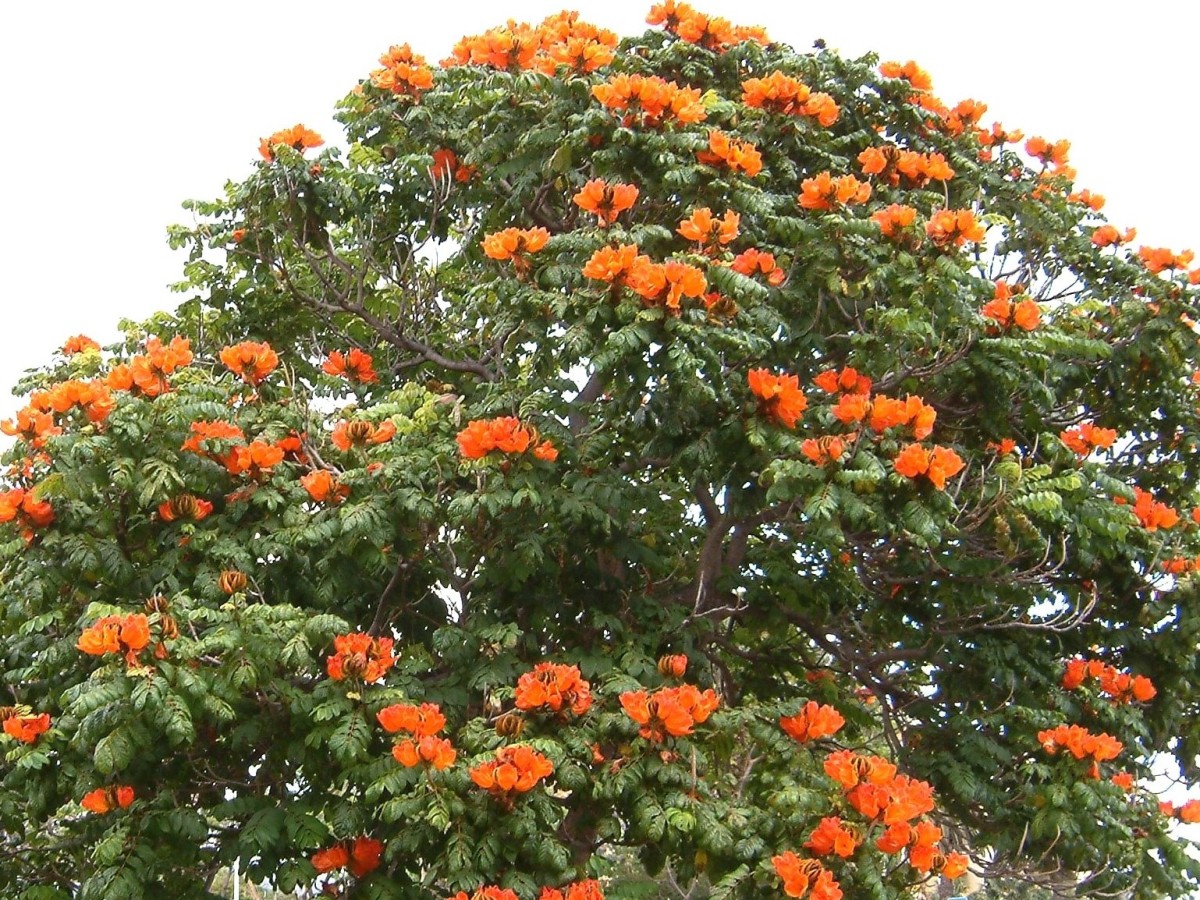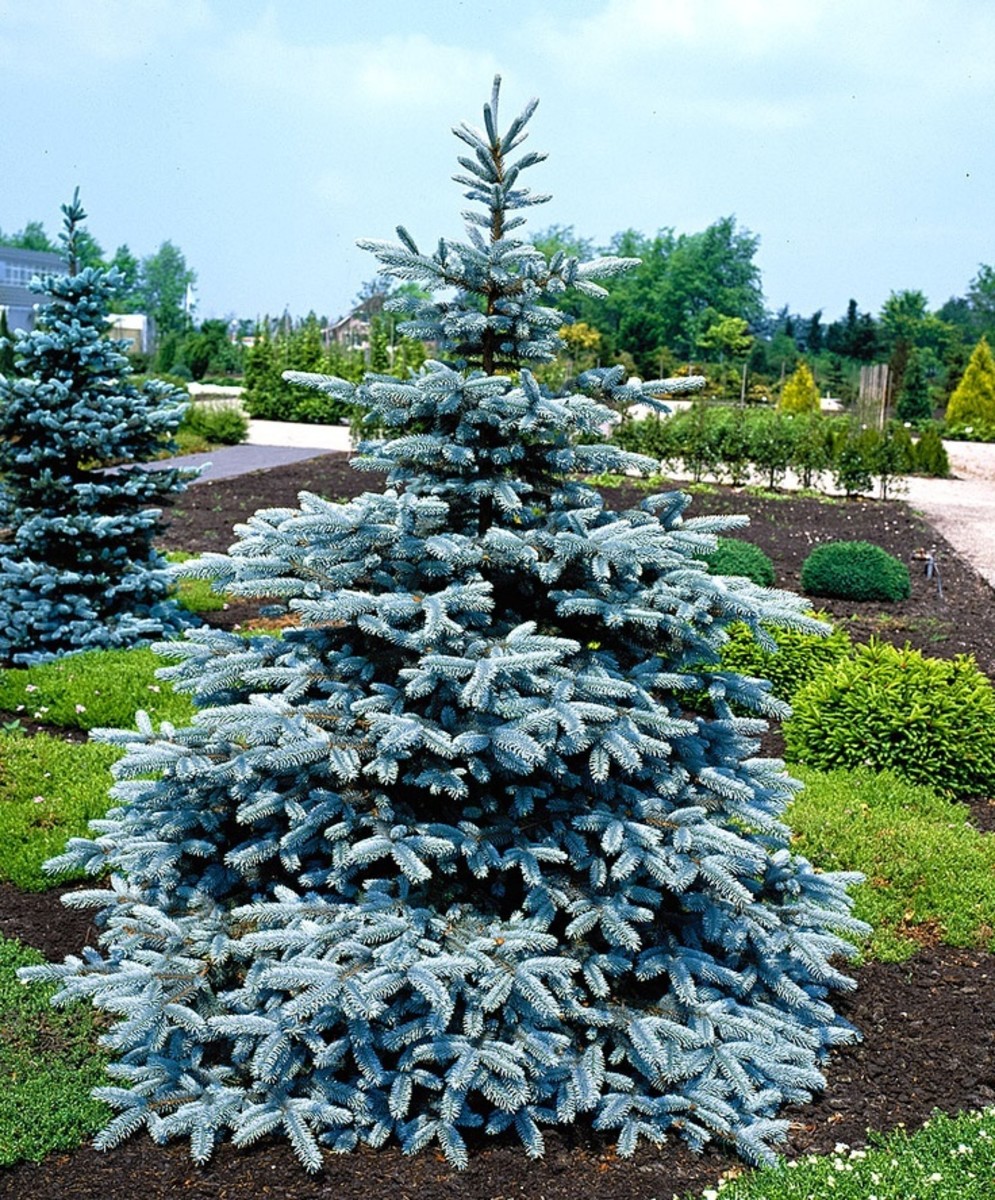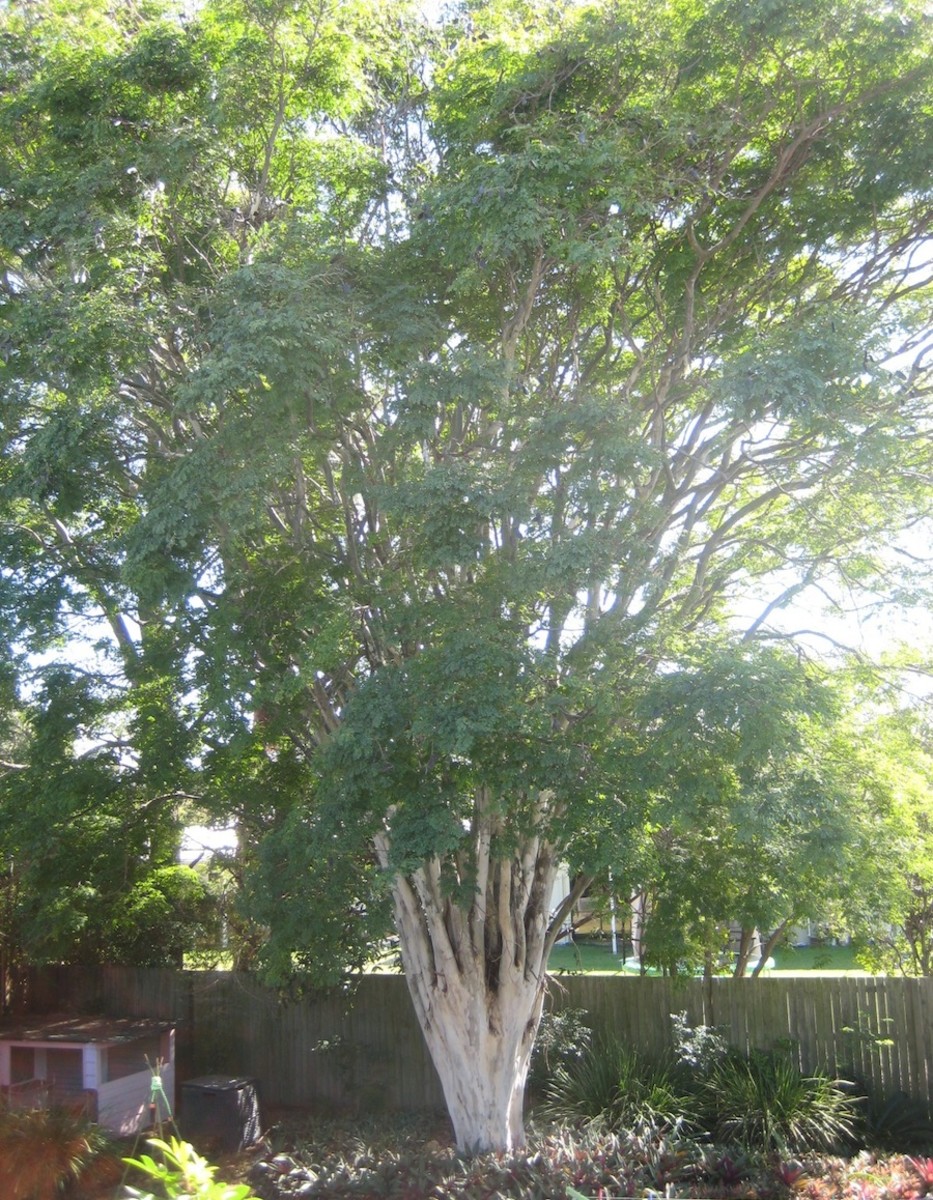Growing Different Types of Citrus Fruits On The Same Tree

If you grow citrus you might be interested to know that you can grow several types of citrus fruit on the same tree! You can have the fruit of valencia oranges on your navel orange tree. You can have the fruit of mineolla tangelos on your marsh grapefruit tree. You can even grow the fruit of limes on your kumquat tree. In fact, you can grow any type of citrus fruit on any other type of citrus tree. This fruit cocktail creation is called, logically enough, a "cocktail tree".
Cocktail trees are formed by removing the buds from one type of citrus tree and attaching them to another type. The resulting branches that develop will bear the type of fruit where the bud was taken from.
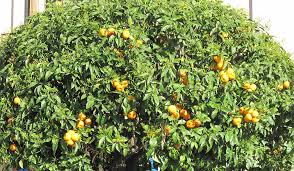
Time to "bud" citrus tree
The time to "bud" citrus trees is in the spring, when the bark is "slipping". Prior to active growth, the sap will be rising in the tree and the bark will be loose. Buds can be removed at this time to graft onto another tree. To determine weather the bark is "slipping" simply score the bark with a sharp knife, and see if it peels back easily.
Remove some one year old stems from the tree you wish to take buds from. This might be from a friend or neighbors tree which has exceptional fruit. Select stems that are one-quarter inch in diameter or smaller. Cut several short pieces of stems, a foot or so in length. These stems are referred to as bud sticks. The buds you will be removing are located at the base of each leaf, where they attach onto the bud-stick.
If you cannot preform the budding immediately, you can store the bud sticks up to 3 weeks in the refrigerator. Wrap the sticks in wet paper towels and insert the bundle in a plastic bag before placing in the refrigerator. This will prevent them from dehydrating.
When your ready to bud, select a location on your tree that has branches between one-half to three-quarters inch in diameter. This is where you will be grafting on your new buds. It is best to choose a location that is not directly exposed to sunlight from the south or west.
With a sharp knife, make a vertical cut in a smooth area on the stem. Make the cut one and one-half inches in length and deep enough to cut through to the wood beneath the bark. Next, make a horizontal cut one- half inch long through the bark at the bottom of your vertical cut. When your finished you will have an inverted "T" cut.
Now it's time to remove the bud for insertion into the "T" cut. To do this select a plump dormant bud, located at the point directly above where a leaf petiole attaches on the stem. Make a horizontal cut across the bud-stick about one-half to three-quarters inch above the bud. Cut the bud and a small piece of wood underneath it using a continuous motion. The cut should begin about one-half to three-quarters inch below the bud, and should end at the horizontal cut made above the bud.
Lift the chip of wood containing the bud, using the leaf petiole (leaf removed) as a handle. This will avoid contaminating the cut side of the bud chip with soaps or oils from your fingers.
Next, carefully peal back the bark of the "T" cut just enough to slide in bud chip in. Push the bud chip down carefully from the top of the "T' , towards the bottom. Slide it far enough down so that the bark flaps hold the bud tightly in the pocket. Be careful not to locate the bud upside-down. Orient the bud the same direction on it's new stem as it was on the stem or it was taken from.
Finally, wrap the entire cut, above and below the bud with Teflon tape. Wrap so that only the bud and leaf petiole are peeking out. This will keep the cut , the bud, and surrounding sapwood from drying out while it heals.
In a few weeks, remove the tape. If the budding was successful, the bud will form into a new shoot. If the bud remains alive but does not grow, try bending the stem over just above the inserted bud and tieing it over.
Budding is both an art and a science. You may want to try grafting several buds, hoping that one will take and grow. Don't be discouraged by early failures. As you practice, your success rate will increase.
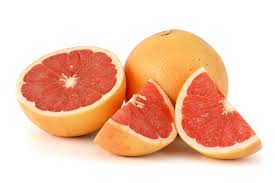
Factors that Effect Citrus Fruit Quality
Citrus trees will be blooming shortly, followed closely on by the formation of small pea-size citrus fruits. As these fruits grow and develop over the spring and summer, certain aspects of care given to the tree can enhance the sweetness, quality and number of fruit.
At this time of year it’s important to fertilize citrus to supply an adequate level of nutrients for the development of healthy growth and fruit formation. Nitrogen is the most important nutrient to be supplied. Ammonium sulfate (21-0-0) has 21% nitrogen and is the standard citrus fertilizer used in Arizona. However, from time to time it’s good to add phosphorous to the mix. Ammonium phosphate (16-20-0) has both nitrogen and phosphorous and can be used for one or all of the recommended three yearly fertilizations. Unlike nitrogen, phosphorous must be scratched into the top half-inch or so of soil to be absorbed by the roots.
A word of caution about fertilizing citrus - don’t overdo it! Too much fertilizer, in particular - nitrogen, can adversely effect the quality of fruit. In fact, grapefruit should be fertilized with only half the amount recommended for other types of citrus. Too much nitrogen, and the rind of grapefruit will become excessively thick!
If your citrus tree has dark green leaves and adequate growth, you can lighten up on the amount of fertilizer applied, or skip one of the three (February, May, September) recommended fertilizations all together.
Because of our prolonged warm winter weather, flowering has already begun on many trees and may coincide with the recommended February fertilization. Contrary to popular belief, fertilizing citrus trees during flowering or early fruit set does not adversely effect blooming or fruit development.
Adequate watering is probably the most critical aspect in the development of quality fruit. Fruit that’s dry on the inside with dry pulp is a frequent complaint of backyard citrus growers. It’s most often caused by lack of sufficient water when the fruit is developing. Fruit cracking is also related to watering problems. The outer rind can spit open when the tree is lacking water and is then give lots of water, either by irrigation or rainfall. The sudden swelling of the fruit can split the outer rind. If watering is consistent, splitting is less likely to occur.
Watering should be increased at the time citrus begin flowering. In fact, from the onset of blossoming to the time fruit are quarter-size in diameter, extra water should be supplied. Where as the recommended watering would normally be one time per week, increasing to twice weekly during this period should lessen fruit drop and improve fruit quality. If you have sandy, well-drained soil it may be necessary to water three times weekly - but with a smaller amount per application.
Deep Watering the Citrus Tree
Deep watering is the key to success. If you’re irrigating with drip, run the emitters long enough to soak the water down 2 to 3 feet deep. This may take several hours. If you only have two or three emitters per tree add more emitters or use a soaker hose to supplement your normal watering.
If adequate water is applied to the tree(s) during the growing season, then fruit should develop properly. The sugar content of the fruit will depend on the stage of ripening. To have an appealing taste, the fruit must have a balance between these sugars and acids. Too much acid and the fruit is bitter. Too much sugar and the fruit is bland and tasteless. Of course, tart lemons and limes will have a much higher acid content than oranges and mandarins.
The variety of citrus will determine it’s ripening range. For instance, Valencia is a late ripening variety of orange that is at peak quality sometime between mid-January and mid-March. Most citrus fruit, such as Valencia, should be tested weekly for taste during it’s ripening range. When the fruit tastes good, it’s ready for picking. The exception is grapefruit. Although grapefruit may be picked as early as December, the sweetness and quality will continue to improve into early spring.




